
The PlayStation 3 (PS3) is a home video game console developed and marketed by Sony Interactive Entertainment. The successor to the PlayStation 2, it is part of the PlayStation brand of consoles. It was first released on November 11, 2006, in Japan, November 17, 2006, in North America, and March 23, 2007, in Europe and Australia. The PlayStation 3 competed primarily against Microsoft's Xbox 360 and Nintendo's Wii as part of the seventh generation of video game consoles.

Sony Interactive Entertainment LLC (SIE) is a multinational video game and digital entertainment company owned by Sony. SIE primarily operates the PlayStation brand of video game consoles and products. In 1993, Sony and Sony Music Entertainment Japan jointly established Sony Computer Entertainment Inc. in Tokyo. SCE released the video game console PlayStation in Japan the following year and subsequently in the United States and Europe the year after. In 2010, SCE underwent a corporate split and established Sony Network Entertainment International (SNEI). SNEI provided gaming-related services through the PlayStation Network, including the sale of game titles and content on the PlayStation Store, as well as offering PlayStation Plus. In 2016, SCE and SNEI merged to form Sony Interactive Entertainment LLC, with its headquarters located in San Mateo, California, U.S.

Hydrophobia is an action adventure video game developed and published by Dark Energy Digital for Microsoft Windows, the PlayStation 3 and by Microsoft Studios for Xbox Live Arcade. The game was released for Xbox Live Arcade on September 29, 2010, as part of Xbox Live's Games Feast promotion, marking the first of three episodes. The PC version was released in 2011.

JoJo's Bizarre Adventure is a fighting video game developed by Capcom based on Hirohiko Araki's manga of the same title. The game was developed by the same team who was responsible for the Street Fighter III series.
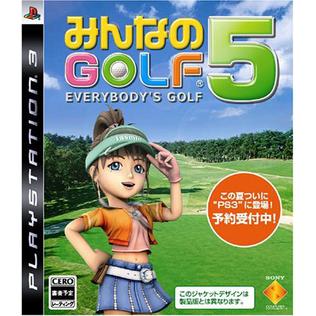
Everybody's Golf 5, known in the PAL region as Everybody's Golf: World Tour, and in North America as Hot Shots Golf: Out of Bounds, is the seventh game in the Everybody's Golf series and the first game released for the PlayStation 3. It was released in Japan on 26 July 2007 to make the 10th anniversary of the series debut on the PlayStation. Additionally, the game was sold in bundle deals with the PlayStation 3 in Japan.

Free Realms was a massively multiplayer online (MMO) role playing video game developed by Sony Online Entertainment (SOE) for Microsoft Windows, Mac and PlayStation 3 that is set in a fantasy-themed world named Sacred Grove. The game was released on April 28, 2009, for Windows. The game restricted to free-to-play up to level 4, although there was access to additional game content via a membership fee. The game allowed the player to fight, interact with other players and more. The game's servers were shut down on March 31, 2014 in a closure of three other SOE MMOs that year; with the company stating a necessity to devote resources to other games.

PixelJunk Monsters is the second game in the PixelJunk series developed by Q-Games for the PlayStation 3. It was released worldwide on the PlayStation Store on January 24, 2008. The game was released for the PlayStation Portable under the title PixelJunk Monsters Deluxe.

Warhammer 40,000: Space Marine is a third-person shooter hack-n-slash video game developed by Relic Entertainment and published by THQ. It was released for Microsoft Windows, PlayStation 3 and Xbox 360 on September 6, 2011, in North America, September 8, 2011, in Australia, and September 9, 2011, in Europe. It was later ported to Japan and published by CyberFront on October 27, 2011. The game takes place in Games Workshop's Warhammer 40,000 universe and features the Ultramarines chapter. Its gameplay focuses on a hybrid shooting and melee combat model.

Shatter is a 2009 video game developed and published by Sidhe Interactive. The game was released on July 23, 2009 for PlayStation 3 via PlayStation Network, on March 15, 2010 for Microsoft Windows, on September 18, 2012 for OS X, and on March 14, 2013 for Linux. A remastered version developed by PikPok and published by Netflix was released for iOS and Android via Netflix Games on March 23, 2022. A version of the mobile remaster published by PikPok, subtitled Remastered Deluxe, was released on November 2, 2022 for Windows, Nintendo Switch, PlayStation 4, PlayStation 5, Xbox One, and Xbox Series X/S.

Closure is a puzzle-platform game developed by American programmer Tyler Glaiel and artist Jon Schubbe with music and sound by Chris Rhyne. Originally available as a Flash game on the website Newgrounds, a full version of the game was later released for Microsoft Windows, Macintosh, and PlayStation Network in Spring 2012. A Linux port was included in the Humble Indie Bundle 7 in 2012.

Pro Evolution Soccer 2011 is an association football video game in the Pro Evolution Soccer series developed and published by Konami. It was released in 2010–2011. The UEFA Champions League and UEFA Europa League are featured within the game, and for the first time in the series, UEFA Super Cup and CONMEBOL's Copa Libertadores are fully licensed. PES 2011 was succeeded by Pro Evolution Soccer 2012.

Costume Quest is a party-based role-playing video game developed by Double Fine Productions and published by THQ on October 20, 2010. In the game, the player controls a child who is trick-or-treating with their twin on Halloween night when they encounter a monster that kidnaps their sibling. The player must travel around the local neighborhood collecting items for their costume, candy, and fellow children as companions in order to face the leader of the monsters and rescue their sibling. The costume aspects are used in turn-based battle segments, where the player character and companions are transformed into whatever they are dressed as to fight other monsters; the costume aspects are also used for abilities outside of battles.

Moon Diver, formerly known as Necromachina, is a side-scrolling platforming video game developed by feelplus and published by Square Enix. It was released for the PlayStation Network in March 2011, and for the Xbox Live Arcade on May 4, 2011.
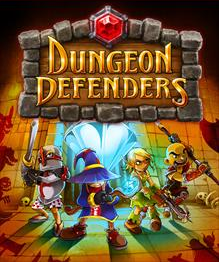
Dungeon Defenders is a hybrid multiplayer video game developed by Trendy Entertainment that combines the genres of tower defense and action role-playing game. It is based on a showcase of Unreal Engine 3 named Dungeon Defense. The game takes place in a fantasy setting where players control the young apprentices of wizards and warriors and defend against hordes of monsters. A sequel titled Dungeon Defenders II was released in 2015.
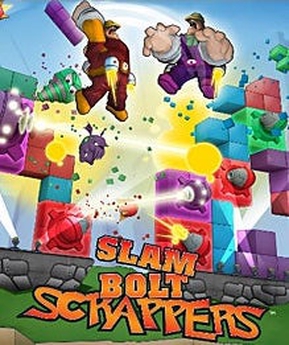
Slam Bolt Scrappers is a puzzle video game produced by independent developer Fire Hose Games. Players control characters who fight enemies in a beat'em up style and build towers to destroy other players. The game blends aspects of several video game genres including puzzle, action, and strategy. Slam Bolt Scrappers was released on March 15, 2011, for digital download on PlayStation Network.
Battle: Los Angeles is a first-person shooter developed by Saber Interactive and published by Konami for Microsoft Windows (Steam), PlayStation Network, and Xbox Live Arcade in 2011. It was released to conicide with the release of the 2011 film of the same name. Aaron Eckhart reprised his role for the game. Players assume the role of Corporal Lee Imlay throughout the game.
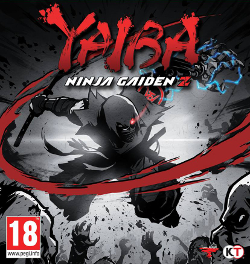
Yaiba: Ninja Gaiden Z is an action adventure hack and slash game, and a spin-off of the Ninja Gaiden franchise. It was published by Tecmo Koei and developed by Spark Unlimited. Comcept's Keiji Inafune conceptualized the game, providing character designs and creating the character of Yaiba. The game was released for the PlayStation 3, Xbox 360, and Microsoft Windows worldwide in March 2014.

Hell Yeah! Wrath of the Dead Rabbit is a platform game for Microsoft Windows, PlayStation 3 through PlayStation Network, Xbox 360 through Xbox Live Arcade, and iOS through App Store. It was developed by French developer Arkedo Studio and published by Sega. The game has an ESRB rating of Teen.
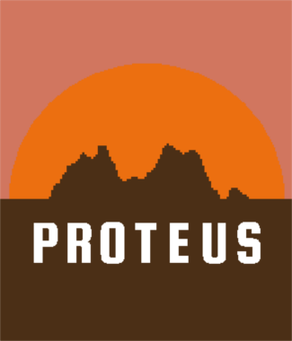
Proteus is a 2013 exploration and walking simulator video game designed and created by Ed Key and David Kanaga for Microsoft Windows, OS X, Linux, PlayStation 3, and PlayStation Vita. In the game, the player traverses a procedurally generated environment without prescribed goals. The world's flora and fauna emit unique musical signatures, combinations of which cause dynamic shifts in audio based on the player's surroundings.

Top Gun is a combat flight simulation game developed by Doublesix and published by Paramount Digital Entertainment. It is based on the 1986 film of the same name. It was released on August 17, 2010, as a downloadable game for PlayStation 3 through the PlayStation Network. The following month, it was released for Microsoft Windows through Steam. One of the film's writers, Jack Epps Jr., was involved in the game's development. Epps wrote new combat scenes and dialogue for the game. In 2011, the game and film were released together under the title Top Gun: Wingman Edition.

















